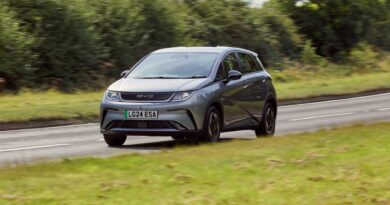Are electric cars cheaper to run? New data reveals EV service savings over ICE
Electric cars are proving to be cheaper to service and repair than petrol or diesel models, according to new data.
It has long been predicted that EVs will be cheaper to maintain than ICE cars due to having fewer moving parts but new figures have confirmed this and revealed the annual savings.
Real-world data from fleet experts Epyx covering more than four million vehicles shows that after three years the average spend on servicing, maintenance and repair (SMR) for an EV is 45% lower than for petrol or diesel.
In the first year, SMR costs an average of £141 for an electric car, compared with £199 for a petrol or diesel model and £195 for a hybrid. With each subsequent year, the savings grow. By year two, EVs cost an average of £174, with hybrids reaching £266 and ICE cars £290. In the third year, the average SMR spend is £221 on an EV, £341 for a hybrid and £401 for an ICE car.
The data, which covers cars up to three and a half years old also shows that EVs, on average, require fewer visits to a garage for maintenance or repair.
At the end of year one, the average number of garage visits for EVs is 1.13 compared to 1.17 for hybrids and 1.21 for ICE. By year two, the comparative figures were 1.18 for EV, 1.29 for hybrid and 1.31 for ICE. At the end of year three, the figures were 1.36 for EV against 1.53 for hybrid and ICE.
Tim Meadows, CCO of Epyx, said: “We’ve previously released SMR data about EVs and it was quite inconclusive, largely because the number on our database was still very low and not really sufficient to build up a consistent picture. However, we now have something like 409,560 EVs on the platform, which provides a much-improved impression.
“Essentially, what we are seeing is both noticeably lower running costs and numbers of garage visits for EVs compared to both hybrids and ICE vehicles. By the end of year three, these are quite substantial – the EV SMR spend is not much more than half seen for ICE.”
Read more: The best used electric cars of 2024
Over the three-year period, the data shows that hybrids cover around 7,000 more miles than other fuel types, at 38,626 miles, while EVs and ICE covered comparable distances at 31,805 and 31,770 respectively.
Meadows added: “For some time, everyone from manufacturers to fleet managers have predicted that EVs will enjoy substantially lower running costs than ICE vehicles because of the reduced number of moving parts and general wear that is inherent in the technology. It’s possible, even probable, that these real world figures are starting to show this expectation become reality.
“However, when it comes to comparisons to hybrids, the picture is less clear thanks to the much higher mileage in our sample. The additional average 7,000 or so miles covered by the hybrids in our sample could easily account for the differences in SMR cost and garage visits compared to EV, needing items such as additional tyres or brake pads.”






